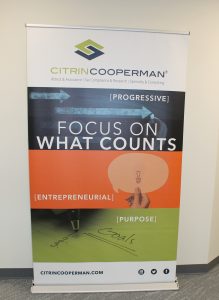There has been an aggressive push over the past couple of years by state legislators around the country and the federal government to enact legislation prohibiting or limiting the use of non-compete agreements by employers. One such bill, entitled the Workplace Mobility Act, was introduced in the U.S. Senate in late April 2018 and seeks to, among other things, prevent employers from “enter[ing] into, enforc[ing], or threaten[ing] to enforce a covenant not to compete with any employee of such employer, who in any workweek is engaged in commerce or in the production of goods for commerce.” Locally, the New York City legislature introduced a bill in 2017 that seeks to prohibit the use of non-compete agreements for “low-wage employees,” and would require employers to notify potential employees of any requirement to enter into a covenant not to compete prior to hiring the employee.
With potentially impactful legislation looming, courts continue to be highly critical of non-compete agreements. A recent decision from the Supreme Court in Westchester County illustrates the courts’ focus on ensuring that non-compete provisions are narrowly tailored to serve only the company’s legitimate business interests.
In Cindy Hoffman, D.O., P.C. v. Raftopol (J. Ruderman), the court dealt with a familiar scenario of the enforcement of a non-compete agreement in the medical field. The “curveball” in this case, however, is that the court was not dealing with a physician leaving a practice to compete elsewhere, but rather a physician’s assistant who left to work for a competitor. Defendant, Caroline Raftopol (“Raftopol”), a physician’s assistant, was hired in 2012 by Plaintiff Cindy Hoffman, D.O., P.C. (“Hoffman P.C.”), a dermatology practice with three locations in Westchester, Dutchess, and Putnam counties. Upon hiring, Raftopol was required to sign a non-compete agreement that prohibited her from being employed by a competitor within fifteen miles of any Hoffman P.C. location for two years following the end of her employment. Raftopol ultimately resigned from her position in May 2017 and, in September 2017, Hoffman P.C. learned that Raftopol was working for a competitor within the geographic restriction set forth in the non-compete agreement. Litigation ensued with Hoffman P.C. seeking a preliminary injunction to prevent Raftopol’s further employment with the competitor.
On its face, the court found the duration and geographic scopes of the non-compete restrictions to be reasonable and noted that other courts had upheld similar restrictive covenants. However, the court also noted that such cases typically dealt with physicians working for competitors and, under such circumstances, courts have given wider latitude to restrictive covenants because they involve a professional of a learned profession whose services were considered to be “unique and extraordinary.” Thus, the question in Hoffman became whether a restrictive covenant that would otherwise be reasonable against a physician was reasonable to protect Hoffman P.C.’s legitimate business interests against a physician’s assistant.
Hoffman P.C. argued the restrictions were reasonable against Raftopol because she built a relationship with patients and obtained trade secrets from Hoffman P.C. Under those circumstances, the court noted that the restrictive covenant must be tailored “only to the extent necessary to protect the employer from unfair competition which stems from the employee’s use or disclosure of trade secrets or confidential customer lists.” Columbia Ribbon & Carbon Mfg. v. A-1-A Corp., 42 N.Y.2d 496 (1977). In this regard, the court found that there was little support in the record that Hoffman P.C. had any legitimate interest in preventing Raftopol from working with a competitor within 15 miles of Hoffman P.C.’s offices. Specifically, the court held that Hoffman P.C. had not established that Raftopol had either the knowledge or power to impact the company’s profitability. There was also no support in the record for Hoffman P.C.’s contention that Raftopol could find similar employment outside of the restrictive area.
With respect to Hoffman P.C.’s concern that Raftopol could solicit patients whose information was otherwise unascertainable, Raftopol conceded that she would not solicit Hoffman P.C. patients but that the restrictions regarding employment with a competitor were causing her severe financial strain. Given Raftopol’s concession regarding solicitation, the court ordered that Hoffman P.C.’s motion for a preliminary injunction was denied with the exception that Raftopol could not solicit Hoffman P.C.’s patients for the duration of the two-year period.
In this case, the court was able to narrow down the overly broad restrictive covenant to what was the actual, legitimate business interest of the employer which, in this case, was the solicitation of patients. The court tailored a restriction that suited the employer’s needs while not preventing the former employee from employment. While this court was amenable to crafting a tailored restriction, many courts will simply deny the motion for a preliminary injunction in its entirety if the restrictive covenants are too overreaching. With that in mind, when these agreements are being drafted, it is critical for businesses to focus on what the business is really concerned about if this employee leaves the company – and it cannot be anything and everything involving the business. With the continuing push to prohibit or limit these agreements, employers need to adapt and tailor their restrictive covenants to what is truly important to the business.









 Ronkonkoma, NY –
Ronkonkoma, NY – 


 By Jamie Herzlich
By Jamie Herzlich By Michael Smith, guest blogger
By Michael Smith, guest blogger













